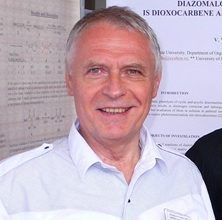Housing provision of citizens is believed to be problematic due to the reduction of new construction, aging housing fund caused by the absence of major repairs and inability of people to maintain financially their own homes.
Citizens of Ukraine gained independence along with a housing fund in a total area of 0.93 billion square meters, or 18.3 square meters per person, and a high rate of developing housing, which is about 20 million square meters per year with a share of public funds more than 60%.
Over the last years, housing was modified to a market economy and its magnitude was determined by the effective demand of citizens, but not with a social policy. As a result, by 2014, the housing fund increased to 1.1 billion square meters or approximately by 20%, but oftentimes with a lower annual growth rates, and housing provision exceeded 24 square meters. Unfortunately, it could be explained by the 12% population decline. If we compare current annual spendings on housing with the end of the 1980-th, the share of state and local budgets will be amounted to less than 1%.
Despite an average improvement of public housing, we must bear in mind that housing provision became uneven due to the urbanization and some changes on the labor market. According to the official data, which do not reflect the actual living conditions of people, less than normal 13.65 square meters per person have 40% of urban households, and less than 7.5 square meters per person have 10.1%.
If we look at the age of existing housing fund, we will see that until 1960 there was introduced about 40% of the living area, and during 60’s – 80’s mass building – 45% more. An average degree of physical deterioration of buildings now is 47.2%, which is unsatisfactory within the timeframe in which deteriorated over 20% buildings are in need of selective major repairs. According to normative limitation of maintenance-free exploitation of buildings, which is 25-30 years, major repairs require at least 80% of them.
Now, we will concentrate on the ownership of these buildings. If all housing fund of Ukraine consists of 10.2 million houses, 240 thousand of them are apartment houses that have area almost 500 million square meters. However, condominiums have been created only in 17 thousand houses, which is 15.4% of the total housing area. Thus, about 85% of apartment housing remains unowned for various reasons, first of all because of the poor building condition.
In order to evaluate corresponding financial needs, representative statistics is required. Yet, Ukraine lacks it. Based on a sample of our data and on the basis of general considerations, let us assume that given the volume of buildings needed to be repaired, the deterioration of houses and prices on materials and construction works, an average cost of capital repair of apartment building is around $ 100 for the square meter. Therefore, 400 million square meters of living area requires funds in the amount of $ 40 billion (UAH 600 billion!) or $ 2.4 thousands per person with an average per capita living space, and over $ 6.3 thousands per average household of 2.6 persons.
At the same time, according to the national statistics, the structure of the population by income is close to the following proportions: the poor – 35%, proto-medium (between poor and medium) – 50%, medium – 10%, wealthy – 5%. Without going into details about the actual level of income of each group, it is obvious that poor people and most probably proto-medium group do not have the opportunity to repair and renovate further their own houses. In other words, we can conclude that 85% of urban households are financially insolvent to maintain their houses.
In the joke about the Karelian-Finnish Republic there were two Finns – Finkelstein and financial inspector that turned out to be the same person. Similarly, the volume of houses that need major repairs, the proportion of ownerless buildings and the proportion of people who can not buy a new one or fully repair existing own house is actually the same thing. And it is sad that at least four-fifths of housekeepers soon could become homeless.
Due to the given above arguments, we should reject the government’s housing policy, which focuses mainly on the development of private property. The new policy, in our opinion, should be based, firstly, on the balance of financial abilities and community needs for housing, and secondly, on the need of a combination of the private ownership of apartments and a creation of condominiums along with the development and extension of municipal and private ownership on houses.
We want to say immediately that it is unrealistic to preserve and restore qualitatively and quantitatively the available housing. Given the resident’s absence of funds, the state would have to accumulate the amount of money that corresponds to the annual budget. Taking into account that the average rate of depreciation of other fixed assets in the country is even more disastrous –77,3%, or UAH 8 trillion, it is hard to justify the expediency to spend last budget on the private housing of citizens.
On the other hand, we must realize that it does not matter who would fund the major repairs, the expenses should not only be found in the state and local budgets or investors, but also be returned them as social outcome, rents or investors profit.
It is difficult to say what level of housing provision is appropriate to our society. It depends on the economy development, population distribution between urban and rural areas, differentiation of household income and so on. Certainly, it also depends on the public policy that will not avoid the need of significant concentration and reallocation of expenses on public housing. Instead of quantitative recipes we will dare to suggest the following mechanism, which is able to bring country housing provision on economically justified level.
Let proportions between individual and apartment buildings remain approximately equal, and apartment housing stock with condominiums also will be about 20%. The “house – residents” model of house property contains families that are able to accumulate or attract sufficient funds in order to finance building repairs and pay for current utility services.
The remaining 80% of apartment housing stock should go to the communal property. It is necessary to legitimize the status quo when apartments are privatized and houses are under control of public utilities, adding to this appropriate community property rights on these houses and their responsibilities towards the effective maintenance of buildings and attracting necessary for this purpose funds. This model “houses – local community” means, in essence, that, unlike condominiums, when a group of households hold and operate the building, the community will do the same in regard to the whole complex of buildings, which will be easier for the community to accumulate adequate funds on the maintenance of housing stock and conduction of the regular full repairs. From the residents’ standpoint, this would mean that they need to refund both current and capital expenses.
Compensation mechanisms are various: the expenses will be covered by cash, with the help of credits or cost of flats that are likely to gain the greatest expansion. The coexistence of private ownership of apartments and subsidies, dotations for owners for paying for utility services and the financing of full repairs is illogical.
Let us consider the further models.
The communal house can be sold by the local authority to a private owner before or after the full repair. In such way there will appear profitable houses according to the model “owner of the house – apartment owners”, where the income of the homeowner is formed on investments of building maintenance. This model is connected to the prestigious buildings in central areas, where the market value of the property will compensate the cost of maintenance of a house along with the high quality full repairs. The part of such housing, in our opinion, will be negligible, up to 10%, and will be concentrated in large cities.
Another part, let it be 20% of economy class apartment buildings will remain in communal ownership and will be kept by carrying out only the necessary full repairs and adjustable level of rents for resident-owners.
Now considering the rest of the housing stock.
Required full repairs, which will be made at the expense of banks, enterprises and local budgets, and in case of the apartment owners’ failure to return the expenses through the rent, all or part of the rights to possess property will be transferred to the appropriate investors. According to this mechanism, unlike communal buildings with privatized apartments and profitable houses, there will appear profitable houses that completely belong to private owner or public housing that belong to community. In this model, residents-owners will kind of exchange their property into an apartment in the old building for the equivalent of the rent for living in a renovated building.
The owners of profitable houses – banks, private individuals, enterprises or business partnerships, will get the profit on the investments of purchasing of houses, flats and carrying out full repairs. The sources of these investments are, for example, deposits, the amount of which is over UAH 600 billion.
Public housing, where both apartments and houses will be in communal ownership, will be provided for disadvantaged families on terms defined by the community and the state with the help of the provision of some financial support. The source of expenses will be property taxes, balanced with relevant needs. But this is the topic of next material.
“Honorable Mention” in MindSketch competition
Attention
The author doesn`t work for, consult to, own shares in or receive funding from any company or organization that would benefit from this article, and have no relevant affiliations

